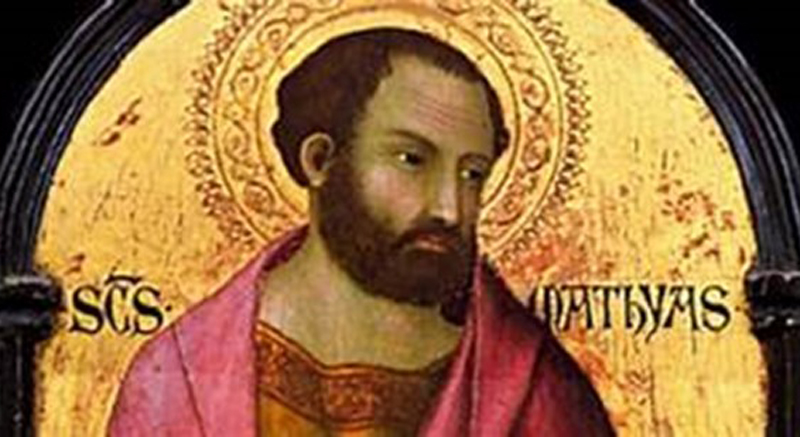(Died 1st century)
Matthias was not one of the original Apostles, although he was with Jesus from his baptism through the Ascension.
It was after that when Peter proposed that the assembled disciples, who numbered about 120, nominate two men to replace Judas. They chose Joseph called Barsabas (whose surname was Justus) and Matthias. Then they prayed, “Thou, Lord, who knows the hearts of all (men), show whom of these two thou hast chosen, that he may take part of this ministry and apostleship, from which Judas by transgression fell, that he might go to his own place.” (Acts 1:24–25) Then they cast lots, and the lot fell to Matthias. It was then that Matthias was numbered with the 11 apostles.
The fate of Matthias diverges depending on which source you consult. Greek tradition says that Matthias planted the faith about Cappadocia and on the coasts of the Caspian Sea, residing chiefly near the port Issus.
According to Nicephorus, Matthias first preached the Gospel in Judaea, then in the region of Colchis (now in modern-day Georgia) and was martyred there by being stoned to death. A marker placed in the ruins of the Roman fortress at Gonio (Apsaros) in the modern Georgian region of Adjara claims that Matthias is buried at that site.
The Synopsis of Dorotheus contains the tradition that “Matthias preached the Gospel to barbarians and meat-eaters in the interior of Ethiopia, where the sea harbor of Hyssus is, at the mouth of the river Phasis. He died at Sebastopolis, and was buried there, near the Temple of the Sun.”
Alternatively, another tradition maintains that Matthias was stoned at Jerusalem by the local populace, and then beheaded. According to Hippolytus of Rome, Matthias died of old age in Jerusalem.
The feast of St. Matthias was included in the Roman calendar in the 11th century and celebrated on the sixth day to the Calends of March (Feb. 24 usually, but Feb. 25 in leap years). In the revision of the general Roman calendar in 1969, his feast was transferred to May 14 so as not to celebrate it in Lent but instead in Eastertide close to the Solemnity of the Ascension, the event after which the Acts of the Apostles recounts that Matthias was selected to be ranked with the 12 Apostles.
It is claimed that St. Matthias’ remains were brought to Italy through Empress Helena, mother of Emperor Constantine I (the Great); part of these relics would be interred in the Abbey of Santa Giustina, Padua, and the remaining in the Abbey of St. Matthias, Trier, Germany. According to Greek sources, the remains of the apostle are buried in the castle of Gonio-Apsaros, Georgia.
Adapted by A.J. Valentini from: Online, C. (n.d.-b). St. Matthias – Saints & Angels. Catholic Online. Retrieved May 4, 2021, from https://www.catholic.org/saints/saint.php?saint_id=5
